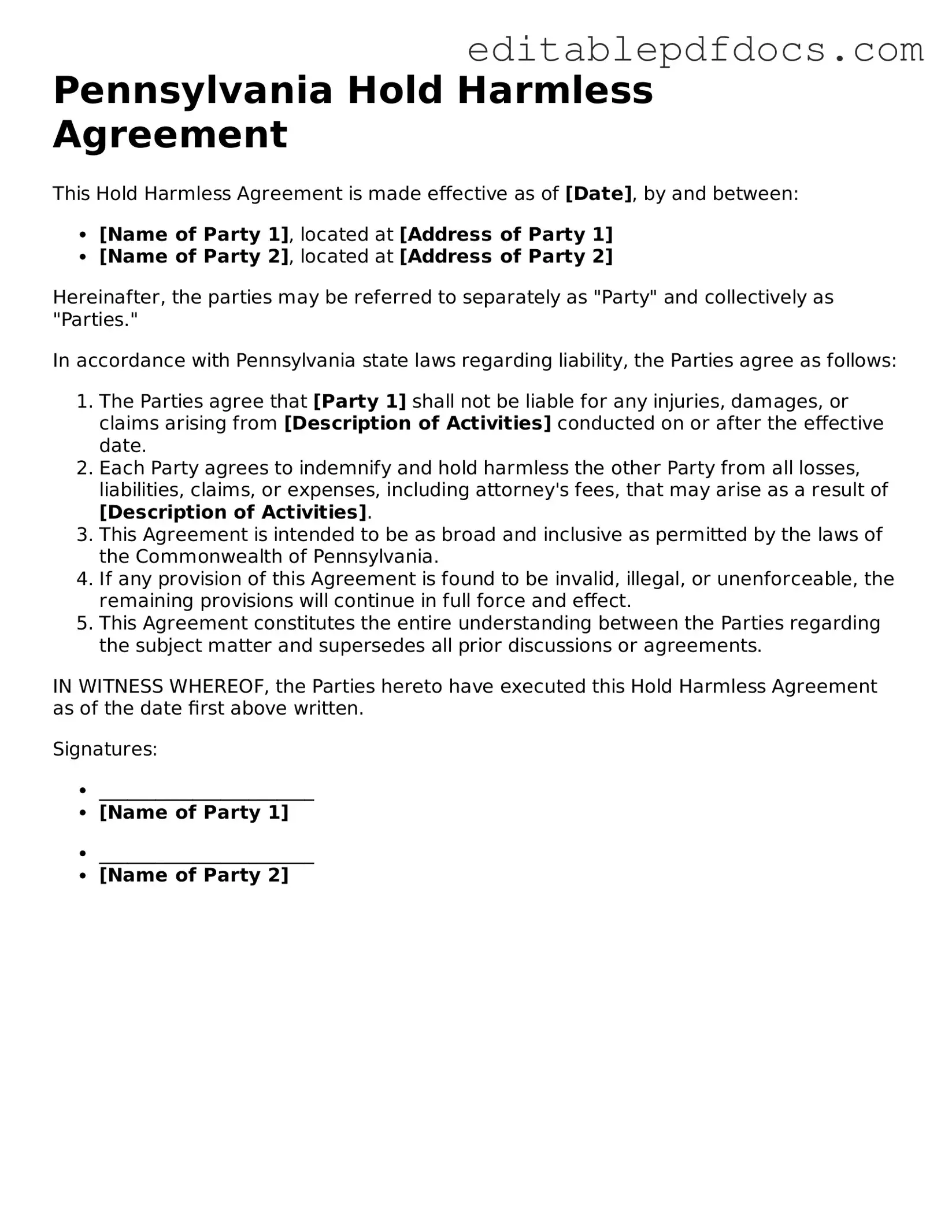When filling out a Pennsylvania Hold Harmless Agreement form, individuals often overlook important details that can lead to complications later on. One common mistake is not providing complete information. It’s essential to include all relevant names, addresses, and contact details. Omitting even a single piece of information can render the agreement less effective or even void.
Another frequent error is failing to read the entire document carefully. Some people skim through the agreement, missing crucial clauses that outline responsibilities and liabilities. Understanding every section is vital, as it ensures that all parties are aware of their obligations and rights. Ignoring this step can lead to misunderstandings and disputes down the line.
Inaccurate dates are also a common pitfall. Individuals might forget to update the date or may write an incorrect one. This mistake can affect the enforceability of the agreement, especially if a dispute arises and the date becomes a point of contention. Always double-check the dates to ensure they reflect the correct timeline.
Another mistake involves not having the agreement signed by all parties. An unsigned document can be seen as incomplete and may not hold up in court. Ensure that everyone involved in the agreement has signed it, as this signifies their acceptance of the terms laid out.
People often neglect to consult with legal counsel before finalizing the agreement. While it may seem straightforward, legal language can be tricky. A lawyer can help clarify terms and ensure that the agreement is tailored to your specific situation. Skipping this step can result in unforeseen legal issues.
Additionally, some individuals fail to keep copies of the signed agreement. After all parties have signed, it’s crucial to make copies for everyone involved. This helps in maintaining transparency and provides a reference point should any questions arise later.
Another mistake is not considering the implications of the agreement. Some people may not fully understand what it means to hold someone harmless. It’s important to grasp the potential consequences of signing the agreement, as it may limit your ability to seek damages in certain situations.
Lastly, people often rush through the process, treating it as a mere formality. Taking the time to carefully review and complete the Hold Harmless Agreement can save significant trouble in the future. A thorough approach ensures that all parties are protected and aware of their responsibilities.
